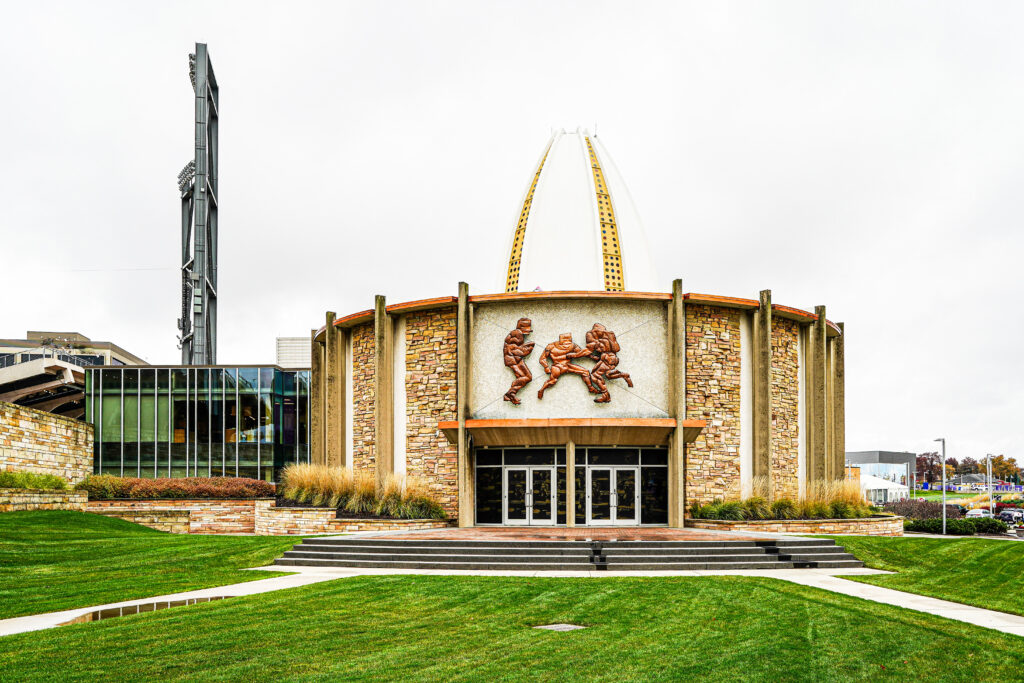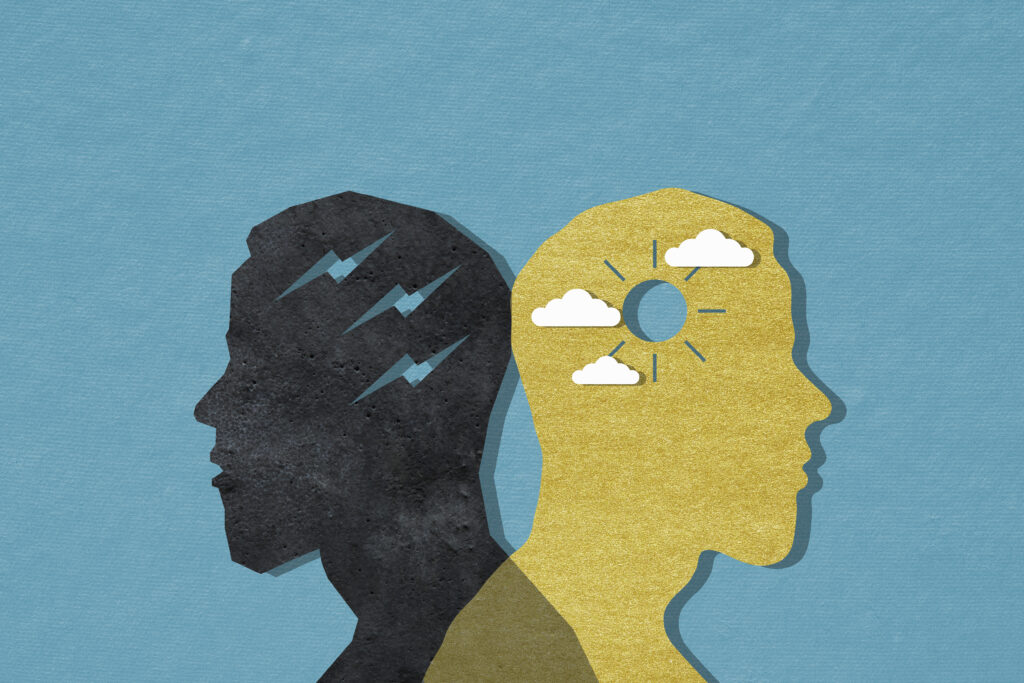

Tune in to hear Gabby Taveras, co-founder of Equal Pay Group, a D&I consulting firm, on why now is the time to close the wage gap. Taveras also shares how to educate organizations on integrating inclusivity and equity into business decisions, hiring practices and retention strategies.
Read the Transcript
Sandy Laycox: Welcome to the Leader’s Edge Podcast. I’m Sandy Laycox, Editor in Chief of Leader’s Edge. In this episode, The Council’s director of health policy and strategy, Katie Oberkircher, sits down with Gabby Taveras, co-founder of equal pay group, which is a D&I consulting firm focused on closing the wage gap and educating organizations on how to integrate inclusivity and equity into business decisions, hiring practices and retention strategies. In this conversation, Gabby describes what it’s like as a female minority starting a compensation benchmarking firm. She discusses partnering with employers, what happens when Leadership isn’t on the same page, about the impact of D&I on workplace culture and some of the reasons organizations initially fail in these efforts. Take a listen!
Katie: Gabby, thank you so much for joining me today.
Gabby Taveras: Thank you for having me. I’m so excited to be here!
Katie: So, I want to start off with a question that I feel like you could actually probably spend this whole conversation answering. But let me ask you, what really inspired you to start equal pay group?
Gabby Taveras: I definitely could take quite a while answering this one question. But to keep it short, I have a background as a recruiter. When I graduated from undergrad, I have my neuroscience degree, and I ended up working at this professional services firm. There was a third largest, very great organization, and when I was working there, it was really the first time, I think I was really exposed to how impactful HR could be and how impactful human capital was to an organization. And so going to that experience, I learned that I really loved supporting organizations, and I really loved developing and supporting their employees.
Fast forward, I ended up having to, unfortunately, leave that position, well – unfortunately and fortunately, because I ended up leaving because I became the first black Miss Massachusetts.That was a year, whirlwind of a year in itself. And after doing that year, I really was able to see that I have, at the bare minimum, a gift of advocating for other people, and that really stems from my childhood and always feeling like I needed to advocate for myself, or maybe not necessarily knowing how to, but knowing that I needed to.
When I finished my year as Miss Massachusetts, having this newfound understanding of a little bit of what my purpose was in life. I then ended up working at a business where I worked very closely with the owner. I was basically like to call me like the boss when the boss isn’t around, like the second head honcho there. And when I was working there, it got to the point where I was basically doing all of the tasks, or majority of the tasks, that needed to be done, with the exception of maybe three or four.
And so when I looked at what I was doing and looked at what I was getting paid, it didn’t really match up. It didn’t make sense to me, because I was so effective in my role that the owner didn’t even have to go to work, because I was able to execute the job, which was fine, but within compensation, that means it obviously comes with something when you give someone that level of responsibility. And so when I went online and I looked up how much it was that I was being compensated in comparison to how much I should have been compensated, and what my day to day responsibilities were, I found that out of the 20 items on the list that of responsibilities, I hit 18 of them and was able to add six or seven more. And that’s a story that I think all of us can say, Yeah, I’ve been there because we’ve all ended up doing way more in our positions than we initially thought we would be doing. And so I talked to my mentor, David, and he was just telling me this is something I see all the time. He owns a company called compensation HR group, and they focus on compensation practices. And he said: this is a problem that really exists, and the wage gap is such a prevalent issue. And here’s a perfect example of someone who, unfortunately, is on the receiving end of what that wage gap can do to people, particularly women of color. And he said: Gabby, I advocate for this all the time, but no one really wants to listen to me, because I’m just like this older white man who is talking about the wage gap, and it doesn’t directly affect me at all.
He said, I really think that you should join in this conversation, this dialog, and so when I lined up my experience with an HR, my passion for the wage gap, because I had always known I was going to be get paid less, another quick story I can tell you is, is I remember being a little girl helping my my family business, and my little cousin was working there too. We both did work. I did the “easier jobs”, and he did the harder job breaking down boxes and things. I helped him with his job. When I finished mine at the end of the day, he got double what I got that day. And I said: why did he get more money than me, if I did my job and his job? And they said, Well, you’re a girl, and you’re always just going to get paid less, unfortunately.
And so learning that lesson as a child, and then going through my career as a professional woman who is educated and confident and competent and really committed to the line of work that I do, regardless of what line of work that is, it all just makes sense that when presented with this opportunity to join forces with someone I really respected and revered to be able to really address this wage gap, especially in such a timely time as right now. I couldn’t pass it, I couldn’t turn it down, because I knew that if I didn’t do it, who else was gonna do it. And so that’s what we’re doing. We are closing the wage gap one company at a time with equal pay group.
Katie: That’s great. Gabby, I appreciate the background and the stories and it sound like, sounds like it’s been a journey to get to where you are today, but that this is an issue that you’ve experienced firsthand. You’ve seen it from as far back as when you were a little girl. So let me move on now to asking you about when equal pay group partners with an employer to help them become a more equitable company overall. Do you recommend a top down approach or a bottom up approach, or a combination between two.
Gabby Taveras: Certifiably, everything is better when there’s a combination between two, because that means that the people at the top who aren’t necessarily directly impacted by whatever it is that’s happening within the organization, because they don’t necessarily have to exist in those environments day if they don’t have that direct relation with it, then of course, there’s no problem, right? It’s like out of sight, out of mind, and so that’s why it’s important to engage your employees as in an organization and making sure that they also are committed to that change. So there was a study that was released talking about how organizations that really want to embed the diversity and inclusion measures, usually that’s something that they say, I’m just going to create a chief diversity officer, hand this over to them, or this is an HR department issue. We’re just going to let HR partake in it and handle it. But it’s really impactful when leaders themselves join in in that dialog, it’s really impactful when they say, what is it that they believe, or what is it that they stand for and what they don’t stand for, because that sets the tone for the company. It really, really does. I mean, I understand that whenever I’ve worked at a company and the leaders were the ones who were actually coming to us and engaging with us, it not only made me feel seen and heard and appreciated, but it also built a level and sense of loyalty to them as well. And so with equal pay group, one of the things that we do for these organizations is is when they decide we feel like there’s an equity within our organization, we can then say, okay, let’s execute a Pay Equity Analysis on your behalf, let’s evaluate your pay practices and make recommendations and when comes and when individuals. I think it was a study that said 72% of people said they would not work at an organization where there was a wage gap, and 83% said that they would change companies if they felt like another company had more gender equity and didn’t have a wage gap than if their company did. And so it really comes down to being a retention problem when the leaders aren’t engaged and when the employees are also not engaged.
Katie: I think that stat that you pointed out is really interesting, and I think it’s true that in a lot of cases, this becomes a retention problem and you won’t be able to attract the the types of employees that you want if you don’t really invest the time in in thinking about what your your pay equity practices are and how that reflects the overall culture of your organization. But I think too, I want to, I want to come back to a point that you mentioned about leaders who want to sort of segment this issue so they want to hire someone for it or push it over to a certain department. So let me ask you this following on this leadership thread, what? How do you navigate a conversation when Leadership isn’t necessarily on the same page about the impact of D&I on workplace culture overall?
Gabby Taveras: Well, the first question you have to ask is, why? It’s just why? Because, when you look at the news, even today, right in the past year, the World has joined in on this Black Lives Matter movement, and now I think people are starting to see the value in the conversation about not just diversity, but truly inclusion and equity. And actually, there was this quote from Dr Ella Washington, where she said a truly diverse and inclusive environment is one that is valuing everyone’s contribution and raising the bar for everyone, and not lowering the bar, as some my people might assume, research has also shown that organizations that diversify are more lucrative.
Mackenzie said that at their 40% they increase their revenue by at least 40% and it’s not just because you’re hiring more black and brown people to just show up to work every day, but really, because you’re including them in that dialog, when you have different kinds of people sitting in a room trying to address or tackle a specific problem or project, they’re going to think better. They’re going to work harder, because they actually tested this when they had Republicans and Democrats, they said you’re going to go and you’re going to present your case on a specific topic, and when they felt as though they were going to be presenting it to people, or when they were told they were going to present it to people within a similar political group, they came less prepared, because they had that baseline assumption that people would agree with them. So they didn’t have to put in that extra work to exhaust all of their options pertaining to that topic. But when they knew that they were going to be working in a group with someone of an opposite political belief, they actually came more prepared because they knew that they needed to cross their T’s and got their eyes more.
Katie: I really appreciate that example. I hadn’t heard that specific scenario of two opposing political parties and what it looks like when they try to explain their ideas to each other. But that concept makes sense, right? You know, valuing everyone’s contributions is, in the end, a strategic business decision. But I think it’s, I think it’s not necessarily a linear process, either, and so I’m curious from your perspective, and you’ve talked about this on your own podcast, dear HR, about you can’t really make progress on a topic like diversity and inclusion within an organization without first acknowledging and really unpacking some of the emotions that come with a below average workplace experience. And so I would love if you could just elaborate on that?
Gabby Taveras: Yeah, thank you for mentioning that. Because, yes, in my podcast, I say so many things. I’m that you listen, because I’m, like, I saw so much stuff on my podcast. I do love podcasts, and that’s why I’m here. So to elaborate a little bit more on that, from my personal experience this, this is multifold, because, like you had said, there’s no linear path right to be able to solve diversity and inclusion issues. And so let me just start with when this belief and like double down that I have of talking about acknowledging and discussing the emotions that come along with it, of having a below average workplace experience. So back to the company that had worked out for professional services as a professional recruiter, there’s a professional recruiter, and then there’s a standard recruiter, which is standard recruiter is an entry level position professional recruiter, which is what I was, a promotion that you specialize in that specific faction, and you can, otherwise, as a recruiter, go anywhere else within the company.
And at that company, every single person that worked there since the conception of the organization started off as a recruiter, a standard recruiter. Our CEO was a standard recruiter. CFO was a standard every single person at that company started off as a standard recruiter, and they promoted and hired only from within. And the reason why I wanted to point that out was because they were able to fix a lot of their issues that would come up as they came up, because they had people who understood what it was like to have that below average workplace experience, and I think that that’s so important because it gave our CEO empathy for what we did on a day to day basis.
Katie: Let me ask you, Gabby, just from the other perspective, what what do you feel like is the role and responsibility of an employer to shift institutional cultural values, or just the way that things are done within the office Setting, to try to accommodate or meet one individual employee where they are. And so I guess what I’m trying to get at is, what, what kind of effort do you think is expected of employers in this moment in time, in in trying to adjust and be flexible?
Gabby Taveras: So the trend that I’m seeing is, Entrepreneurship is that it’s all kind peak, and the people who are actually starting companies are black women and women of color in general. So rather than staying at these corporate companies and utilizing their talent within those spaces, they’re becoming consultants. They’re building up their own systems. They’re building up their own processes. They’re doing their own thing, and they’re saying, I no longer need to subject myself to whatever cultural environment it is that exists here to get a paycheck. So I think you’ve touched on this a little bit, butin your experience so far, what is the most common reason that organizations fail in these type of efforts every time, or most of the time, when we talk to HR professionals who are leading the department and our women, and we talk about the wage gap and whether or not if it exists, they say, oh, no, that that definitely is not here. We’re very on top of it.
When the analysis is run, there is a wage gap and they’re surprised, like, what, what? How does it get here? Another reason why I think a lot of organizations can fail in these efforts is because they literally seek to diversify their organization, but they don’t actually look to change the culture to support these diverse hires. You have to ask yourself, are we creating a culture that truly is inclusive, and that’s allowing people to participate in these dialogs. Like, yes, employee affiliation groups are very helpful, but actually applying the feedback from those groups and implementing it and not saying we’ll put this on the agenda for the annual review. So now that we’re here, let’s do something about it.
Katie: Thanks, Gabby, I feel like that’s a really great place to wrap up, but I so appreciate your time. Thank you so much for joining me.
Gabby Taveras: Absolutely. Thank you so much Katie for having me.
That was Gabby Taveras telling us it’s time to have the conversation around diversity and inclusion and what it means in the workplace. Thanks for listening.
Don’t forget to tune in at leadersedge.com or find us on Spotify and Apple podcast.




